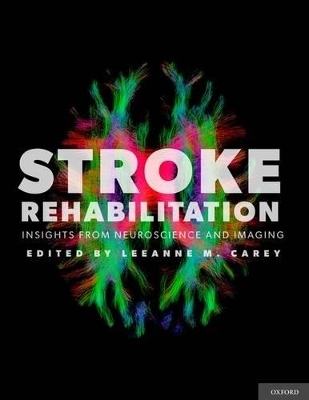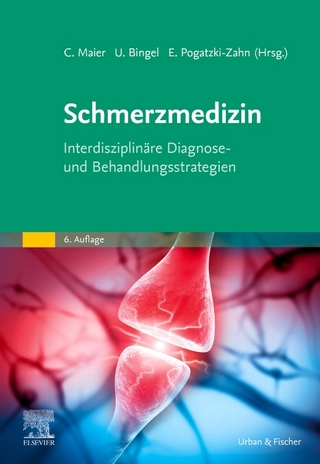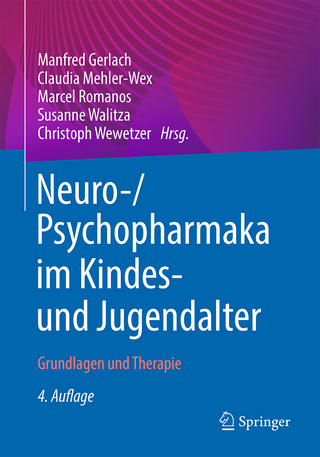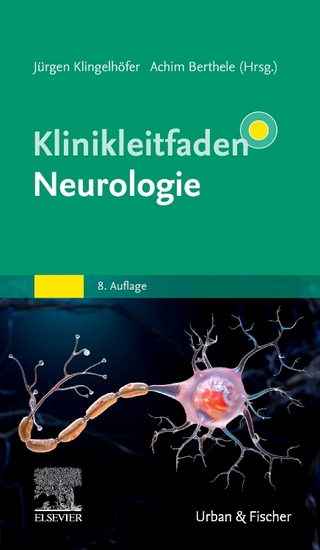
Stroke Rehabilitation
Oxford University Press Inc (Verlag)
978-0-19-979788-2 (ISBN)
Stroke Rehabilitation explores the potential to shape and maximize neural plastic changes in the brain after stroke from a multimodal perspective. Active skill based learning is identified as a central element of a restorative approach to rehabilitation. The evidence behind core learning principles as well as specific learning strategies that have been applied to retrain lost functions of movement, sensation, cognition and language are also discussed. Current interventions are evaluated relative to this knowledge base and examples are given of how active learning principles have been successfully applied in specific interventions. The benefits and evidence behind enriched environments is reviewed with examples of potential application in stroke rehabilitation. The capacity of adjunctive therapies, such as transcranial magnetic stimulation, to modulate receptivity of the damaged brain to benefit from behavioral interventions is also discussed in the context of this multimodal approach. Focusing on new insights from neuroscience and imaging, the book explores the potential to tailor interventions to the individual based on viable brain networks.
Leeanne M. Carey, PhD, Head, Neurorehabilitation and Recovery, Stroke Division, Florey Neuroscience Institutes, Melbourne Brain Centre, and Professor, Department of Occupational Therapy, School of Allied Health, Faculty of Health Sciences, La Trobe University, Victoria, AUSTRALIA.
Part A: Core Concepts ; 1: Introduction ; (Leeanne M. Carey) ; 1.1 Stroke Rehabilitation: An ongoing window of opportunity ; 1.2 The scope of the problem: Prevalence and impact of stroke and increasing need for Stroke Rehabilitation ; 1.3 Recovery and Rehabilitation: Definitions ; 1.4 Neural plasticity and learning as a basis for stroke rehabilitation ; 1.5 Neuroimaging and how it may inform stroke rehabilitation ; 1.6 Paradigm shift in stroke rehabilitation ; 2: Stroke Rehabilitation: A Learning Perspective ; (Leeanne M. Carey, Helene J. Polatajko, Lisa Tabor Connor and Carolyn M. Baum) ; 2.1 Stroke Rehabilitation: facilitation of adaptive learning ; 2.2 A common language for rehabilitation science ; 2.3 Experience and learning-dependent plasticity: Implications for rehabilitation ; 2.4 Role of brain networks in information processing and recovery ; 2.5 Skill acquisition - a learning perspective ; 2.5.1 Explicit, task-specific and goal-driven ; 2.5.2 Involve active-problem solving and be responsive to environmental demands ; 2.6 Application in context of recovery after stroke ; 2.7 Rehabilitation Learning Model: Rehab-Learn ; 2.8 Selected learning-based approaches to rehabilitation ; 2.8.1 Cognitive Orientation to daily Occupational Performance (CO-OP) ; 2.8.2 SENSe: A perceptual learning approach to rehabilitation of body sensations after stroke ; 2.8.3 Language: Constraint-Induced Aphasia Therapy ; 2.9 Measuring response to learning-based rehabilitation ; 2.10 Summary and Conclusion ; 3: Neural Plasticity as a basis for Stroke Rehabilitation ; (Michael Nilsson, Milos Pekny and Marcela Pekna) ; 3.1 Neural plasticity after brain and spinal cord injury ; 3.1.1 Experience-dependent plasticity of the cerebral cortex ; 3.1.2 Spontaneous recovery of function after stroke ; 3.1.3 Cortical map rearrangements ; 3.1.4 Contralateral hemisphere involvement ; 3.1.5 Contralesional axonal remodelling of the corticospinal system ; 3.2 Implications for stroke rehabilitation ; 3.3 Increasing neural plasticity through behavioural manipulations and adjuvant therapies ; 3.3.1 Enriched environment and multimodal stimulation ; 3.3.2 Non-invasive brain stimulation ; 3.3.3 Pharmacological modulators of neural plasticity ; 3.3.4 Emerging targets ; 3.4 Individualized therapy ; 4: Imaging techniques provide new insights ; (J-Donald Tournier, Richard Masterton and Rudiger J. Seitz) ; 4.1 Introduction to neuroimaging techniques and their potential to provide new insight ; 4.2 What neuroimaging can tell us ; 4.2.1 Measuring brain perfusion ; 4.2.2 Measuring water diffusion (Diffusion weighted imaging) ; 4.2.3 Measuring regional cerebral metabolism ; 4.2.4 Assessing structural brain lesions ; 4.3 Measuring brain function with MRI ; 4.3.1 The BOLD image contrast ; 4.3.2 The BOLD response to neuronal activity ; 4.3.2.1 The time-course of evoked BOLD signal changes ; 4.3.2.2 Neurovascular coupling ; 4.3.3 fMRI experimental design and analysis ; 4.3.3.1 Task-related activation studies ; 4.3.3.2 "Resting-state" studies of brain function ; 4.3.4 Applications of fMRI in stroke rehabilitation ; 4.4 Structural connectivity, including tractography ; 4.4.1 Modelling diffusion in white matter ; 4.4.1.1 Diffusion tensor imaging ; 4.4.1.2 Higher-order models ; 4.4.2 Estimating biologically relevant parameters ; 4.4.2.1 Estimating fibre orientations ; 4.4.2.1 Tractography ; 4.4.3 Application to stroke recovery ; 5: Multimodal neurophysiological investigations ; (Cathrin M. Buetefisch and Aina Puce) ; 5.1 Introduction ; 5.2 Magnetoencephalography (MEG) and Electroencephalography (EEG) ; 5.2.1 Methodological considerations ; 5.2.1.1 Site of recording in EEG and MEG ; 5.2.1.2 Source modelling of EEG and MEG data ; 5.2.1.3 Considerations when studying reorganization the motor system with multimodal MEG/EEG ; 5.2.1.4 Neurophysiological rhythms and potential insights into stroke recovery ; 5.2.2 Multimodal MEG / EEG studies of activity in primary sensorimotor cortex in stroke recovery ; 5.3 Transcranial Magnetic Stimulation (TMS) ; 5.3.1 Methodological considerations ; 5.3.2 TMS measures of motor cortex ; 5.3.2.1 Motor threshold ; 5.3.2.2 MEP amplitude ; 5.3.2.3 MEP latency and central motor conduction time ; 5.3.2.4 Cortical silent period ; 5.3.2.5 Input-output curves ; 5.3.2.6 Short Interval Cortical Inhibition (SICI) ; 5.3.2.7 Intracortical facilitation (ICF) ; 5.3.2.8 Interhemispheric inhibition (IHI) ; 5.3.3 Repetitive transcranial magnetic stimulation (TMS) ; 5.3.4 Multimodal TMS/brain imaging studies of stroke recovery ; 5.4 The future? Neurorehabilitative studies of stroke recovery and the brain-computer interface ; Part B: Stroke pathophysiology and recovery ; 6: Stroke: Pathophysiology, Recovery potential and Timelines for Recovery and Rehabilitation ; (Rudiger J. Seitz and Geoffrey A. Donnan) ; 6.1 Introduction ; 6.2 Pathophysiology ; 6.2.1 From Cerebral Ischemia towards Brain Infarction ; 6.2.2 Reversal of Ischemia ; 6.2.3 Patterns of Residual Brain Infarcts after Thrombolysis ; 6.2.4 Functional Consequences of Brain Infarcts ; 6.3 Recovery Potential ; 6.3.1 The Role of the Penumbra ; 6.3.2 Perilesional Plasticity ; 6.3.3 Infarct induced Disconnections ; 6.3.4 Regenerative Therapies using Stem Cell Approaches ; 6.3.5 Rehabilitative Effect of Physical Training ; 6.3.6 Rehabilitative Effect of Mental Training ; 6.4 Timelines for Recovery and Rehabilitation ; 6.5 Conclusions ; Part C: Stroke Rehabilitation: Creating the right learning conditions for rehabilitation ; 7: Organisation of care ; (Dominique Cadilhac, Tara Purvis, Julie Bernhardt and Nicole Korner-Bitinsky) ; 7.1 Introduction ; 7.2 Models of stroke rehabilitation services ; 7.2.1 Inpatient care ; 7.2.2 Community based rehabilitation as an alternative to inpatient rehabilitation ; 7.2.3 Current perspectives on the way forward for providing stroke rehabilitation ; 7.2.4 Characteristics of stroke rehabilitation services ; 7.3 Factors affecting access to organised stroke rehabilitation ; 7.3.1 Staffing Resources and the Interdisciplinary Approach to Rehabilitation ; 7.4 Ensuring the quality of care ; 7.4.1 Monitoring and improving the quality of care in rehabilitation for stroke ; 7.4.2 What do clinical audits tell us about quality of rehabilitation ; 7.4.3 Establishing programs to increase the uptake of evidence into clinical practice ; 7.5 Innovations in rehabilitation and application in clinical practice ; 7.6 Summary of key messages ; 8: Motivation, mood and the right environment ; (Thomas Linden and Michael Nilsson) ; 8.1 Introduction ; 8.1.1 Frequency and nature of post-stroke depression ; 8.1.2 Impact of post-stroke depression ; 8.1.3 Etiology of depression after stroke ; 8.2 Is post-stroke depression a specific disorder? ; 8.3 Predictors of post6-stroke depression ; 8.4 Functional and structural brain changes with depression ; 8.4.1 Functional brain changes ; 8.4.2 Morphological brain changes ; 8.4.3 Depression, cognition and brain networks ; 8.5 Treatment of depression in stroke patients ; 8.5.1 Non-pharmacological treatment options ; 8.5.2 Enriched environment ; 8.5.3 Cortical stimulation and depression ; 8.5.4 Physical activity ; 9: Training principles to enhance learning-based rehabilitation and neuroplasticity ; (Paulette van Vliet, Thomas A. Matyas and Leeanne M. Carey) ; 9.1 Introduction ; 9.2 Task-specific activation of brain regions ; 9.3 Influence of task characteristics on sensorimotor performance ; 9.4 Task-specific nature of motor learning ; 9.5 Task complexity ; 9.6 Behavioural evidence for task-specific training ; 9.7 Mental practice of tasks to enhance motor learning ; 9.8 Increasing repetitions to enhance motor learning ; 9.9 Transfer of training effects ; 9.10 Implicit and explicit learning ; 9.11 Key clinical messages ; 10: Adjunctive therapies ; (Charlotte J. Stagg and Heidi Johansen-Berg) ; 10.1 Introduction & Rationale ; 10.1.1 Insights from animal models ; 10.1.1.1 The need for multiple sessions of stimulation ; 10.1.1.2 Combination with physical therapy ; 10.2 Pharmacological studies ; 10.2.1 Amphetamines ; 10.2.2 Dopaminergic Agents ; 10.2.3 Cholinergic Agents ; 10.2.4 Serotoninergic Agents ; 10.3 Transcranial stimulation techniques ; 10.3.1 Abnormal interhemispheric balance ; 10.3.2 Introduction to the techniques ; 10.3.2.1 Transcranial Magnetic Stimulation (TMS) ; 10.3.2.2 Transcranial direct current stimulation (tDCS) ; 10.3.2.3 Placebo controls ; 10.3.3 rTMS trials ; 10.3.3.1 Acute Stroke ; 10.3.3.2 Chronic Stroke ; 10.3.4 tDCS trials ; 10.3.5 The necessity for individually targeted treatments ; 10.3.6 Safety of transcranial stimulation approaches ; 10.4 Novel therapeutic Approaches ; 10.4.1 Direct Cortical Stimulation ; 10.4.2 Robotic Therapy/Neuroprosthetics ; 10.4.3 Stem Cell Therapy ; 10.4.4 Growth Factors ; 10.5 Conclusions ; Part D: Rehabilitation of common functions ; 11: Movement ; (Cathy Stinear and Isobel Hubbard) ; 11.1 Introduction ; 11.2 Repetitive Task-Specific Training ; 11.2.1 Description ; 11.2.2 Behavioural Effects ; 11.2.3 Neural Mechanisms ; 11.2.4 Summary ; 11.3 Constraint-Induced Movement Therapy ; 11.3.1 Description ; 11.3.2 Behavioural Effects ; 11.3.3 Neural Mechanisms ; 11.3.4 Summary ; 11.4 Mental Practice ; 11.4.1 Description ; 11.4.2 Behavioural Effects ; 11.4.3 Neural Mechanisms ; 11.4.4 Summary ; 11.5 Electrostimulation and EMG Biofeedback ; 11.5.1 Description ; 11.5.2 Behavioural Effects ; 11.5.3 Neural Mechanisms ; 11.5.4 Summary ; 11.6 Robot-Assisted Training ; 11.6.1 Description ; 11.6.2 Behavioural Effects ; 11.6.3 Neural Mechanisms ; 11.6.4 Summary ; 11.7 Virtual Reality and Visuomotor Tracking Training ; 11.7.1 Description ; 11.7.2 Behavioural Effects ; 11.7.3 Neural Mechanisms ; 11.7.4 Summary ; 11.8 Other Approaches ; 11.9 Conclusions ; 12: Touch and body sensations ; (Leeanne M. Carey) ; 12.1 Somatosensory function ; 12.2 Somatosensory Loss after Stroke ; 12.3 Central processing of somatosensory information ; 12.3.1 A model of somatosensory processing ; 12.3.2 Key features of central processing of somatosensory information ; 12.4 Neural correlates of sensory recovery after stroke ; 12.5 Treatment Principles and Strategies Arising from Neuroscience ; 12.5.1 Goal-directed attention and deliberate anticipation ; 12.5.2 Calibration across modality and within modality ; 12.5.3 Graded progression within sensory attributes and across sensory attributes and tasks ; 12.6 Current approaches to sensory rehabilitation ; 12.6.1 Passive stimulation and bombardment ; 12.6.2 Attended stimulation of specific body sites ; 12.6.3 Graded sensory exercises with feedback ; 12.6.4 Eclectic approach involving sensorimotor exercises ; 12.6.5 Perceptual learning and neuroscience based approach: Stimulus Specific and Transfer Enhanced Training ; 12.7 Towards a neuroscience-based model of sensory rehabilitation ; 13: Vision ; (Amy Brodtmann) ; 13.1 Introduction ; 13.2 Anatomy of visual pathways ; 13.2.1 The retinogeniculate pathway ; 13.2.2 The geniculostriate pathway ; 13.2.3 Extrageniculostriate pathways ; 13.3 Ipsilateral representation of the visual hemifield ; 13.4 Striate-extrastriate connections - the <"what>" and <"where>" pathways ; 13.5 Ventral extrastriate cortex: visual object recognition and processing ; 13.6 Colour and movement ; 13.6.1 Dorsal extrastriate cortex: visual motion perception ; 13.7 Visual syndromes caused by stroke ; 13.7.1 Visual field deficits following stroke ; 13.7.1.1 Monocular visual deficits ; 13.7.2 Homonymous visual deficits ; 13.7.2.1 Lateral geniculate nucleus lesions ; 13.7.2.2 Quandrantanopic visual field defects ; 13.7.2.3 Hemianopic visual field defects ; 13.7.3 Disorders of higher visual cognition commonly caused by stroke ; 13.8 Mechanisms of recovery following stroke ; 13.8.1 Neural plasticity post-stroke ; 13.8.2 Mechanisms of recovery following injury to the visual system ; 13.8.3 Cross-modal plasticity in the visual system ; 13.8.3.1 The dorsal extrastriate pathway - a possible site for surrogacy ; 13.9 Visual recovery hypotheses ; 13.9.1 Experiments in visual recovery following stroke ; 13.9.1.1 PET studies in the visual system following stroke ; 13.9.1.2 MRI studies in the visual system following stroke ; 13.10 Restorative therapies: rehabilitating the human visual system ; 13.11 Summary ; 14: Goal driven Attention in Recovery Post-Stroke ; (Sheila Gillard Crewther, Nahal Goharpy, Louise Bannister and Gemma Lamp) ; 14.1 Introduction ; 14.1.1 General background to stroke rehabilitation ; 14.1.2 Goal directed action and the visual system ; 14.2 What is attention? ; 14.2.1 Neuroanatomical interaction between the attention and visual systems ; 14.2.2 Attention and multisensory integration ; 14.3 Learning needs attention, working memory and motivation ; 14.3.1 Neural Plasticity: Learning in the brain ; 14.3.2 Attention and working memory ; 14.3.3 Selective attention is also guided by emotive and motivational evaluation of the target stimuli ; 14.3.4 The case of depression ; 14.4 The effect of brain lesions on attention ; 14.5 Rehabilitation post-stroke ; 14.5.1 Training attention post-stroke ; 14.6 Summary and conclusion ; 15: Executive functions ; (Susan M. Fitzpatrick and Carolyn M. Baum) ; 15.1 Stroke Rehabilitation: The Role of Executive Functions ; 15.2 Overview of a multi-level understanding of executive functions ; 15.3 Neural Substrates of Executive Functions ; 15.3.1 Neural Measures and Interventions ; 15.4 Behavioural measures and interventions ; 15.4.1 Measures to Identify Brain Related Behaviours ; 15.4.2 Measures to identify the Behavioural Consequences of Stroke ; 15.4.3 Performance Based Tests ; 15.5 Behavioural and Performance Interventions ; 15.5.1 Interventions at the Behavioural Level ; 15.5.2 Intervention at the Performance Level ; 15.6 Conclusions ; 16: Language ; (Lisa Tabor Connor) ; 16.1 Neuroscience of Language: Neuropsychological and lesion-symptom ; mapping evidence ; 16.2 Functional Neuroimaging of Language and Recovery ; 16.2.1 White matter tractography ; 16.2.2 Functional connectivity MRI ; 16.3 Current Models of Language Rehabilitation ; 16.4 Treatment Principles/Strategies Arising from Neuroscience and Cognitive ; Neuroscience ; 16.5 Toward a Neuroscientifically-Based Model of Aphasia Rehabilitation ; Part E: New Perspectives and directions for stroke rehabilitation research ; 17: Targeting viable brain networks to improve outcomes after stroke ; (Cathy Stinear and Winston Byblow) ; 17.1 Introduction ; 17.2 Measuring Connectivity to Predict Motor Outcomes ; 17.2.1 Functional Integrity of Motor Pathways ; 17.2.1.1 Crossed Corticospinal Tract ; 17.2.1.2 Uncrossed Corticospinal Tract ; 17.2.1.3 Interhemispheric Pathways ; 17.2.2 Structural Imaging of Motor Pathways ; 17.2.3 Combined Approaches ; 17.2.4 Algorithm for Predicting Upper Limb Motor Outcomes ; 17.2.5 The Lower Limb ; 17.2.6 Conclusions ; 17.3 Priming Approaches ; 17.4 Conclusions ; 18: Directions for stroke rehabilitation clinical practice and research ; (Leeanne M. Carey) ; 18.1 Introduction ; 18.2 Key findings for stroke rehabilitation clinical practice ; 18.3 Beyond the lesion: Impact of focal lesion on brain networks and rehabilitation ; 18.4 Use of network-based models of recovery in stroke rehabilitation ; 18.5 Targeting of stroke rehabilitation to the individual ; 18.6 Guidelines to facilitate the translation of evidence to clinical practice ; 18.7 Perspectives and directions for stroke rehabilitation research ; 18.8 Conclusion
| Verlagsort | New York |
|---|---|
| Sprache | englisch |
| Maße | 279 x 218 mm |
| Gewicht | 1134 g |
| Themenwelt | Medizin / Pharmazie ► Medizinische Fachgebiete ► Neurologie |
| Medizin / Pharmazie ► Physiotherapie / Ergotherapie ► Rehabilitation | |
| Naturwissenschaften ► Biologie ► Humanbiologie | |
| Naturwissenschaften ► Biologie ► Zoologie | |
| ISBN-10 | 0-19-979788-9 / 0199797889 |
| ISBN-13 | 978-0-19-979788-2 / 9780199797882 |
| Zustand | Neuware |
| Haben Sie eine Frage zum Produkt? |
aus dem Bereich


